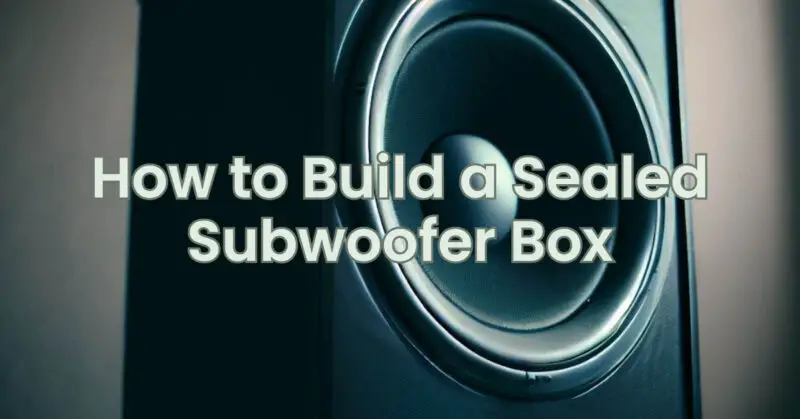Building a sealed subwoofer box is an exciting DIY project that allows you to customize the enclosure to your subwoofer’s specifications. A sealed box design is known for producing tight and accurate bass response. In this article, we will provide you with a step-by-step guide on how to build a sealed subwoofer box, ensuring optimal performance and sound quality.
Materials Needed:
- Medium-density fiberboard (MDF) or plywood
- Measuring tape
- Circular saw or table saw
- Power drill and screws
- Wood glue
- Silicone caulk
- Screwdriver
- Terminal cup
- Speaker wire
- Damping material (optional)
- Carpet or speaker box covering material
Step 1: Determine Box Dimensions Refer to the specifications provided by the subwoofer manufacturer to determine the recommended internal volume for the sealed box. Calculate the dimensions of the box using these volume specifications, considering the thickness of the material you’ll be using (typically ¾-inch MDF or plywood).
Step 2: Cut the Panels Using a circular saw or table saw, carefully cut the panels of the box according to the dimensions you calculated. You’ll need six panels – top, bottom, front, back, and two sides. Ensure that the cuts are clean and precise for proper assembly.
Step 3: Assembly Apply wood glue along the edges of the panels and join them together, using clamps to hold them in place. Drill pilot holes and secure the panels using screws. Make sure the box is sturdy and well-aligned. Apply silicone caulk along the interior seams to ensure an airtight seal.
Step 4: Install Terminal Cup Measure and mark the desired location for the terminal cup on the back panel of the box. Cut an appropriate-sized hole using a hole saw or jigsaw. Install the terminal cup, following the manufacturer’s instructions. Connect speaker wire to the terminals of the cup, ensuring a secure connection.
Step 5: Internal Damping (Optional) For improved sound quality, you can add damping material such as polyfill or acoustic foam inside the box. This material helps reduce internal resonances and enhances bass response. Place the damping material evenly throughout the enclosure, avoiding any blockage of the subwoofer’s movement.
Step 6: Finishing Touches Sand down any rough edges and corners of the box for a smooth finish. If desired, cover the box with carpet or a speaker box covering material using adhesive or staples. This step not only enhances the aesthetics but also protects the box from external damage.
Step 7: Mount the Subwoofer Position and mount the subwoofer inside the box, ensuring it is securely fastened. Follow the manufacturer’s instructions for proper mounting, using appropriate screws or mounting hardware.
Building a sealed subwoofer box is a rewarding DIY project that allows you to create a custom enclosure for your subwoofer. By following the step-by-step guide outlined in this article, you can construct a sealed box with precision and attention to detail. Remember to accurately calculate the box dimensions, assemble the panels securely, install the terminal cup, and consider adding internal damping material for improved sound quality. With your homemade sealed subwoofer box, you’ll be able to enjoy tight and accurate bass reproduction, enhancing your audio experience.

